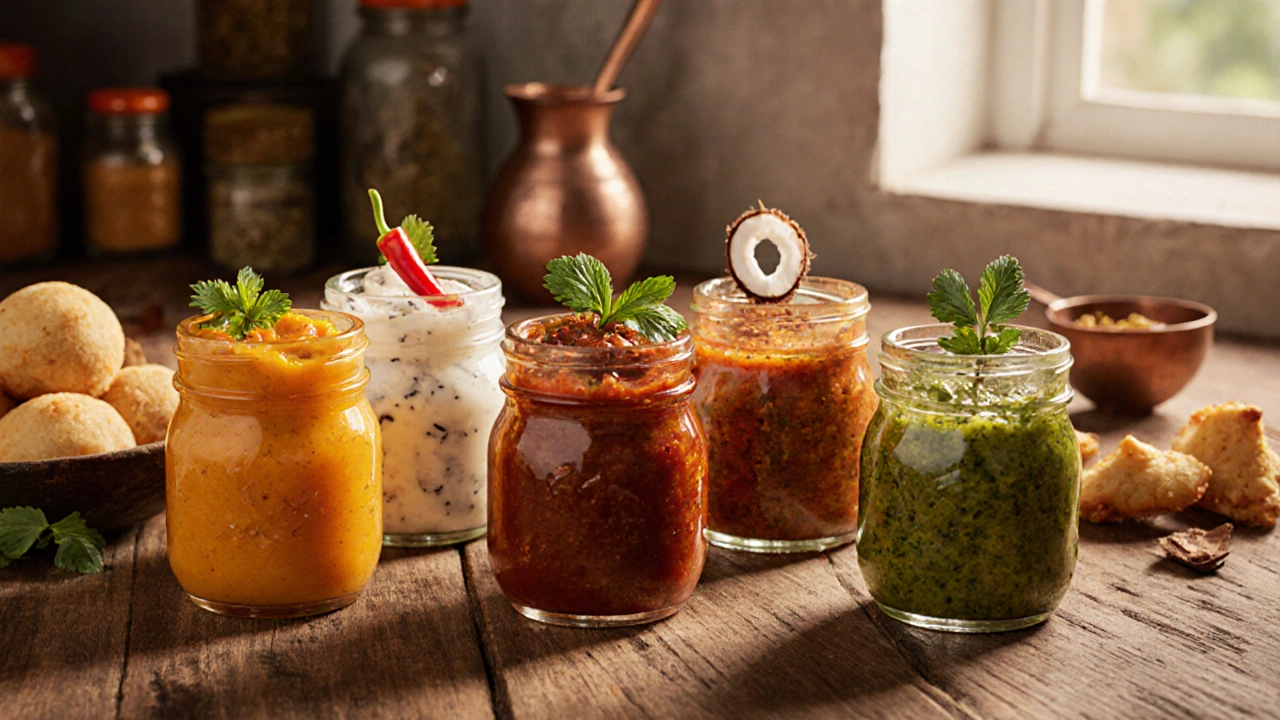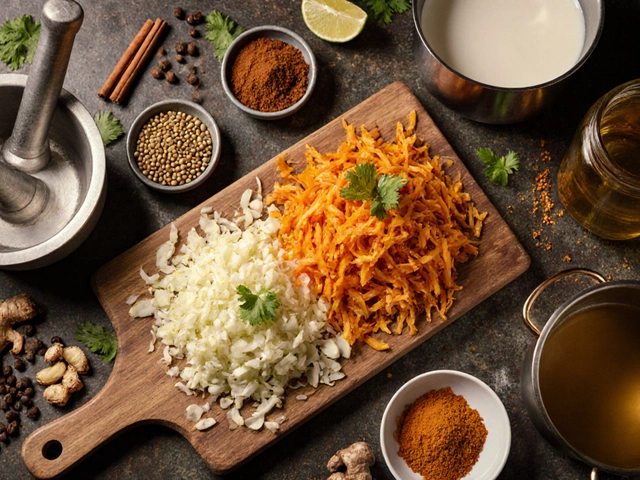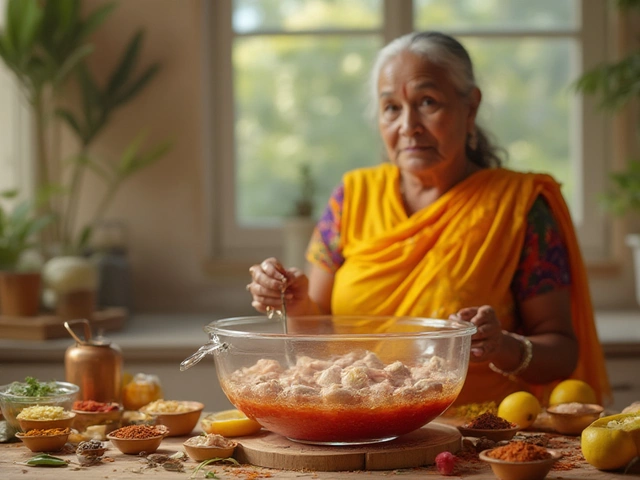Chutney Flavor Calculator
Customize Your Chutney
Select your preferred base ingredient and adjust flavor balance to get personalized pairing suggestions
Your Custom Chutney Profile
Best Pairings
When you hear the word chutney is a tangy, sweet or spicy condiment made by grinding fruit, vegetables, herbs, spices and an acid like vinegar or lime juice, you probably picture a sticky jewel on the side of a curry. But chutney isn’t just a side‑dish; it’s a versatile flavor booster that can turn a bland grain into a feast or calm down a fiery curry with a splash of sweetness. In this guide we’ll unpack what chutney really is, explore the most popular Indian varieties, and walk you through three fool‑proof recipes you can whip up in under an hour.
Where does chutney come from?
Historically, the word chutney traces back to the Sanskrit “chutani”, meaning a mixture of herbs and spices. British colonists encountered regional pickles and sauces in the 18th century and anglicised the term. Today, every Indian household has its own secret version, and the concept has spread to Caribbean, British, and even modern fusion kitchens.
Core ingredients that make a chutney
- Fruit or vegetable - mango, tomato, coconut, tamarind, etc.
- Acid - lime juice, vinegar, tamarind pulp.
- Sweetener - jaggery, sugar, honey (optional).
- Spices - mustard seeds, cumin, chili, coriander.
- Herbs - fresh cilantro, mint, curry leaves.
Adjust the ratios and you’ll get a chutney that’s tangy, sweet, or fiery - whatever your palate craves.
Popular Indian chutney types
| Chutney | Base ingredient | Typical flavor profile | Best dish pairings |
|---|---|---|---|
| Mango | Mango (ripe) | Sweet‑tart with a hint of chili | Idli, dosa, grilled fish |
| Coconut | Grated coconut | Creamy, mildly spicy | South Indian breakfast, seafood curries |
| Tomato | Ripe tomato | Rich, savory, a touch sweet | Paratha, kebabs, samosa |
| Mint‑Coriander | Fresh mint and coriander | Cool, herbaceous, mildly spicy | Seekh kebabs, chaats, sandwich spreads |
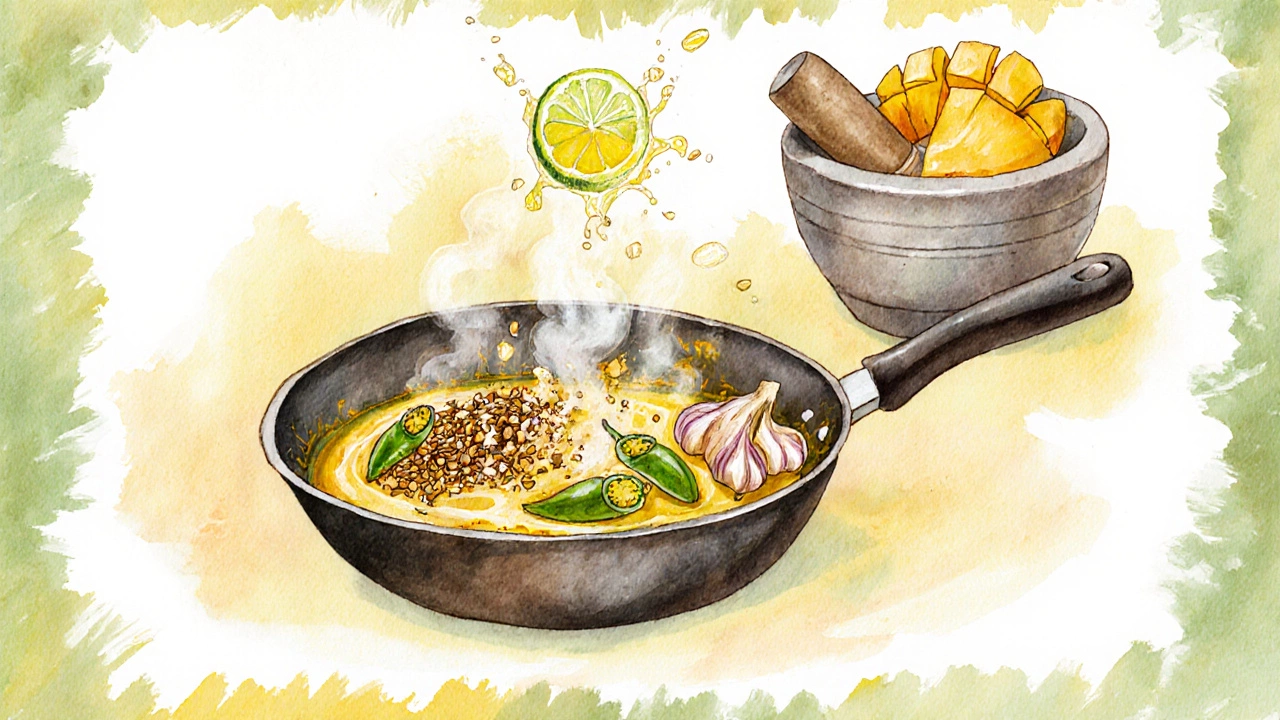
Building a basic chutney base (the ‘panch phoron’ method)
- Heat 2 tbsp mustard seeds in a dry pan until they pop.
- Add ½ tsp cumin seeds and fry for 10 seconds.
- Introduce 2-3 chopped green chilies (adjust heat).
- Stir in 1 tsp grated ginger and 1 tsp minced garlic. Cook 1 minute.
- Drop in your main fruit/veg (e.g., 2 cups chopped mango) and a splash of lime juice or tamarind pulp.
- Blend everything until smooth, adding water as needed. Taste and balance with salt, a pinch of sugar or jaggery, and more chili if you like.
That base works for almost any chutney - swap the fruit, tweak the spice level, and you’ve got a custom sauce in minutes.
Three quick chutney recipes
1️⃣ Sweet‑Spicy Mango Chutney
- 2 ripe mango, peeled and diced
- 1 tbsp jaggery (or brown sugar)
- ½ tsp chili powder
- Juice of 1 lime
- ½ tsp salt
Blend all ingredients, taste, and adjust. Serve chilled with idli or naan.
2️⃣ Creamy Coconut‑Cilantro Chutney
- 1 cup fresh grated coconut
- ¼ cup packed cilantro leaves
- 2 green chilies (remove seeds for milder taste)
- 1 tsp roasted cumin powder
- ½ tsp salt
- Water as needed
Blend until smooth, adding water a tablespoon at a time. This goes great with dosa, vada or grilled fish.
3️⃣ Tangy Tomato‑Tamarind Chutney
- 2 cups ripe tomato, chopped
- 1 tbsp tamarind paste
- 1 tsp jaggery
- ½ tsp chili flakes
- ½ tsp salt
Sauté tomatoes with a dash of oil until soft, then add remaining ingredients and simmer 5 minutes. Blend for a smooth dip perfect for samosas.
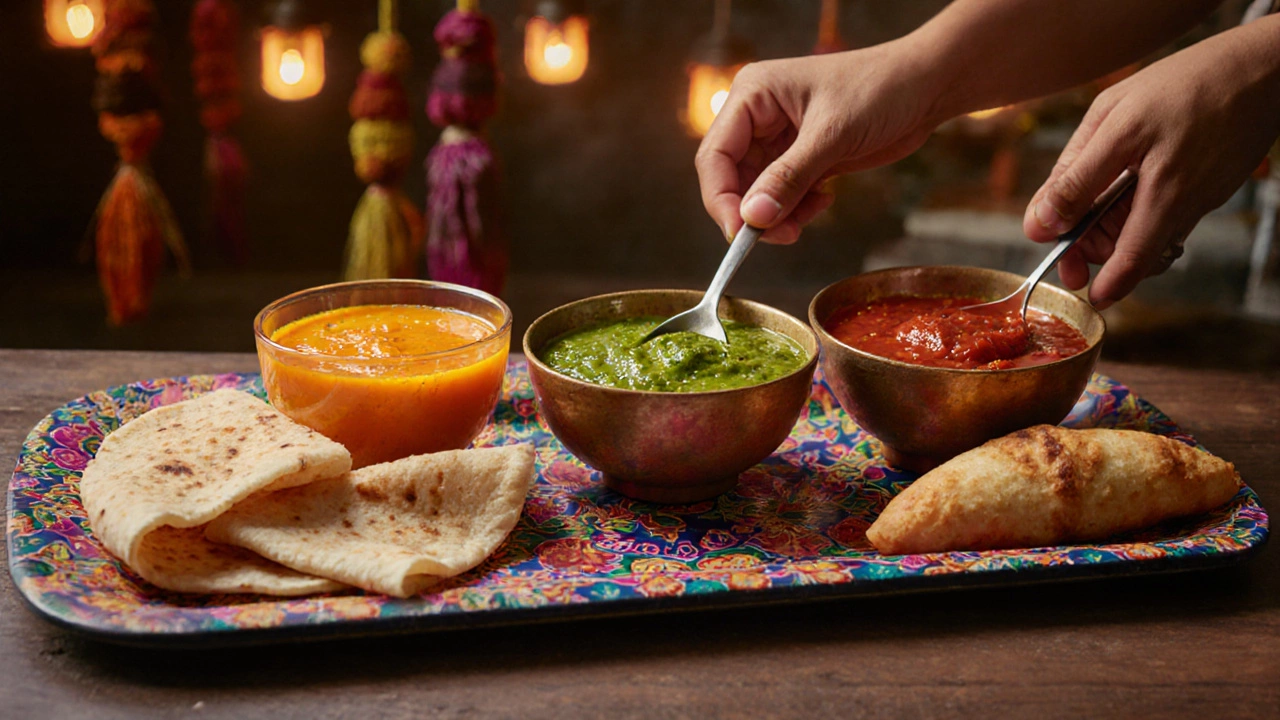
Storing and serving tips
- Refrigerate in airtight jars; most chutneys keep 1-2 weeks.
- For longer shelf‑life, add extra acid (vinegar or lime) and sterilize the jar.
- Serve at room temperature for best flavor - cold sauces can mute spice.
- Use a clean spoon each time to avoid contamination.
Common mistakes and how to fix them
- Too thick: Add a splash of water, lime juice, or extra fruit puree.
- Overly salty: Blend in a raw potato slice, discard after 10 minutes.
- Bland: Boost with a pinch of garam masala or extra chili.
- Separation after cooling: Whisk in a teaspoon of oil (mustard or sesame) to emulsify.
FAQ - all your lingering chutney questions answered
Can I make chutney without a blender?
Yes. Traditional Indian kitchens use a mortar‑and‑pestle (sil batta). It gives a chunkier texture but works perfectly for rustic chutneys.
How long does a homemade chutney stay good?
If stored in a sterilized jar in the fridge, most chutneys last 10‑14 days. Adding extra vinegar or lime juice can push it to a month.
Is chutney the same as pickle?
Not exactly. Pickles are usually preserved in oil or brine and focus on sourness, while chutney balances sweet, sour, and spicy flavors and often uses fresh fruit.
Can I freeze chutney?
Absolutely. Portion it into ice‑cube trays, freeze, then transfer to bags. Thaw in the fridge and give it a quick stir before serving.
What’s the difference between North and South Indian chutneys?
North Indian chutneys often use dairy (curd), roasted spices, and sweeter fruits like mango. South Indian versions favor coconut, tamarind, and more heat from mustard seeds and dried chilies.
Now that you know what chutney really is, you’ve got the basics, the variations, and three ready‑to‑make recipes. Go ahead, blitz a batch, and watch how a spoonful transforms everyday meals into something extraordinary. Happy blending!





